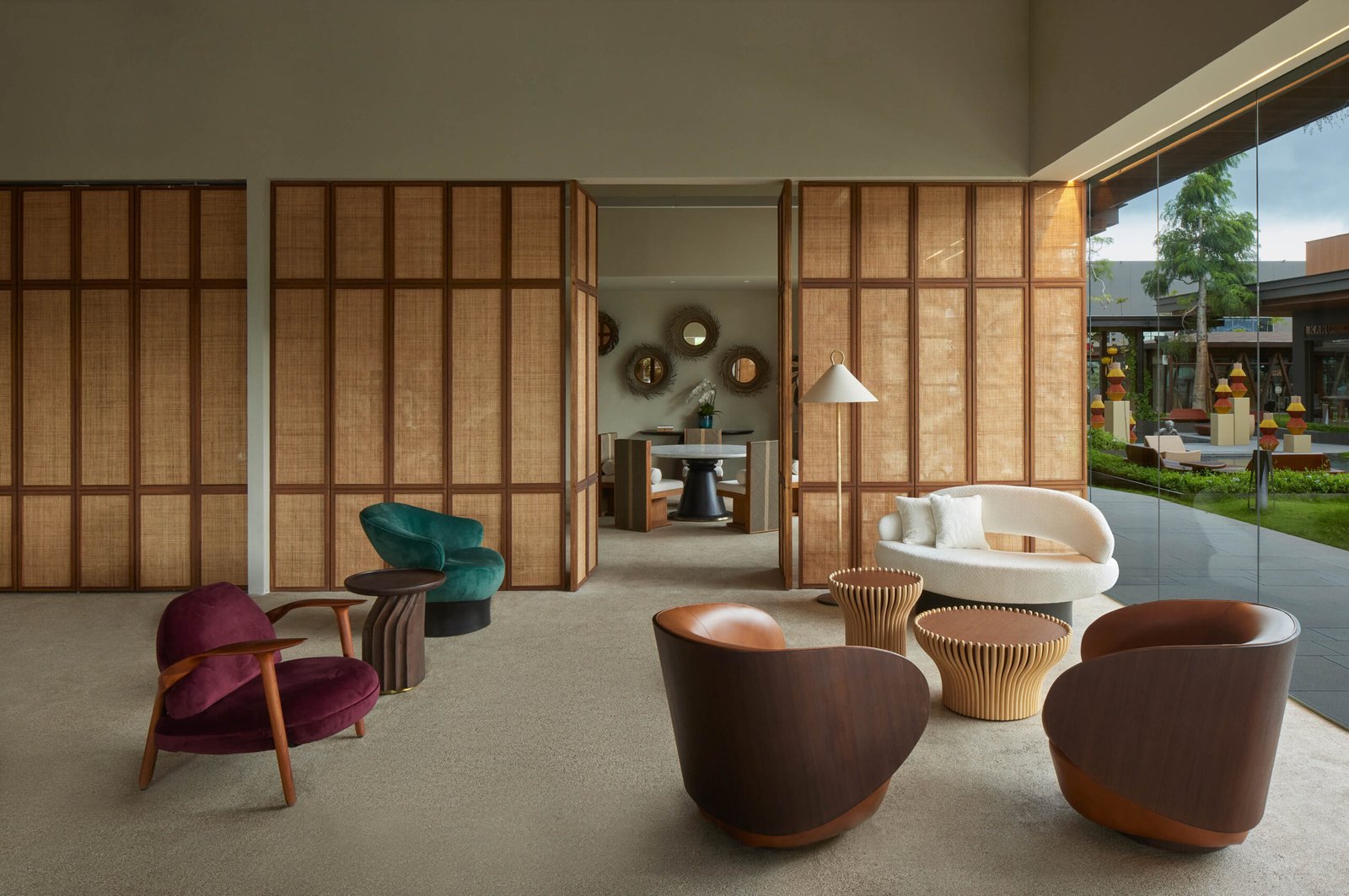Interview Patrick Kasingsing
Images Courtesy of AlvinT (Alvin Tjitrowirjo)


Apa kabar, Alvin and Angela? Welcome to Kanto! What’s a well-designed object or space you’ve interacted with lately that you just have to rave about?
Alvin Tjitrowirjo, design strategist and product designer, AlvinT: Does three years still count as recent? I bought a 1990 Mercedes C124 300ce after growing dissatisfied with how modern cars have become increasingly homogenous and soulless. After immersing myself in publications and YouTube videos, I was amazed by how thoughtfully engineered the car was. It was built during a time when engineers, not accountants, held sway—when quality dictated design, not cost. Products were crafted then to be repaired, not discarded.
I was struck by the car’s design and mechanical ingenuity—details like the cover sill between the seat and center console to catch small items, the folding headrest in the backseat for better visibility when reversing, the gridded rear lights that still shine through dirt in bad weather, the easily replaceable bulbs, and the two bonnet angles that make engine inspection easier. I could go on for hours, really.
What resonated most was the realization that there was a time when a brand truly embodied a company’s philosophy, reflected in the quality of its products. Sadly, today’s Mercedes are driven by marketers, budgeted by finance managers, and designed to a price point—a completely different philosophy. I bought and drive this car daily to stay connected to that “time.”
On a related note, I experienced James Turrell’s work at the Chichu Museum in Naoshima. The installation taught me how time and place deeply influence perception. The incremental adjustments in how our eyes perceive color—shaped by the sky’s contrast with the installation—revealed that sometimes, beauty takes time to fully understand.
Angela Mayrina, brand manager, AlvinT: I have to rave about the “Hiroshi Sugimoto Gallery: Time Corridors,” which we visited last November on Naoshima Island, Japan. I’ve admired Hiroshi Sugimoto since discovering his Abandoned Theaters series, where he compresses entire films projected in haunting, forgotten theaters into still photographs—a stunning reflection on the passage of time. It’s been a while since I’ve encountered a gallery so thoughtfully designed in such a perfect location. We lost track of time, like kids discovering new wonders at every turn. I was repeatedly struck by the depth of his work—all exploring the concept of time—even as something tangible within a space. His mind, eye, and sensitivity are evident in the details of his photographs, the architecture, and the way his works are meant to be experienced—perhaps through the lens of both an artist and an architect.

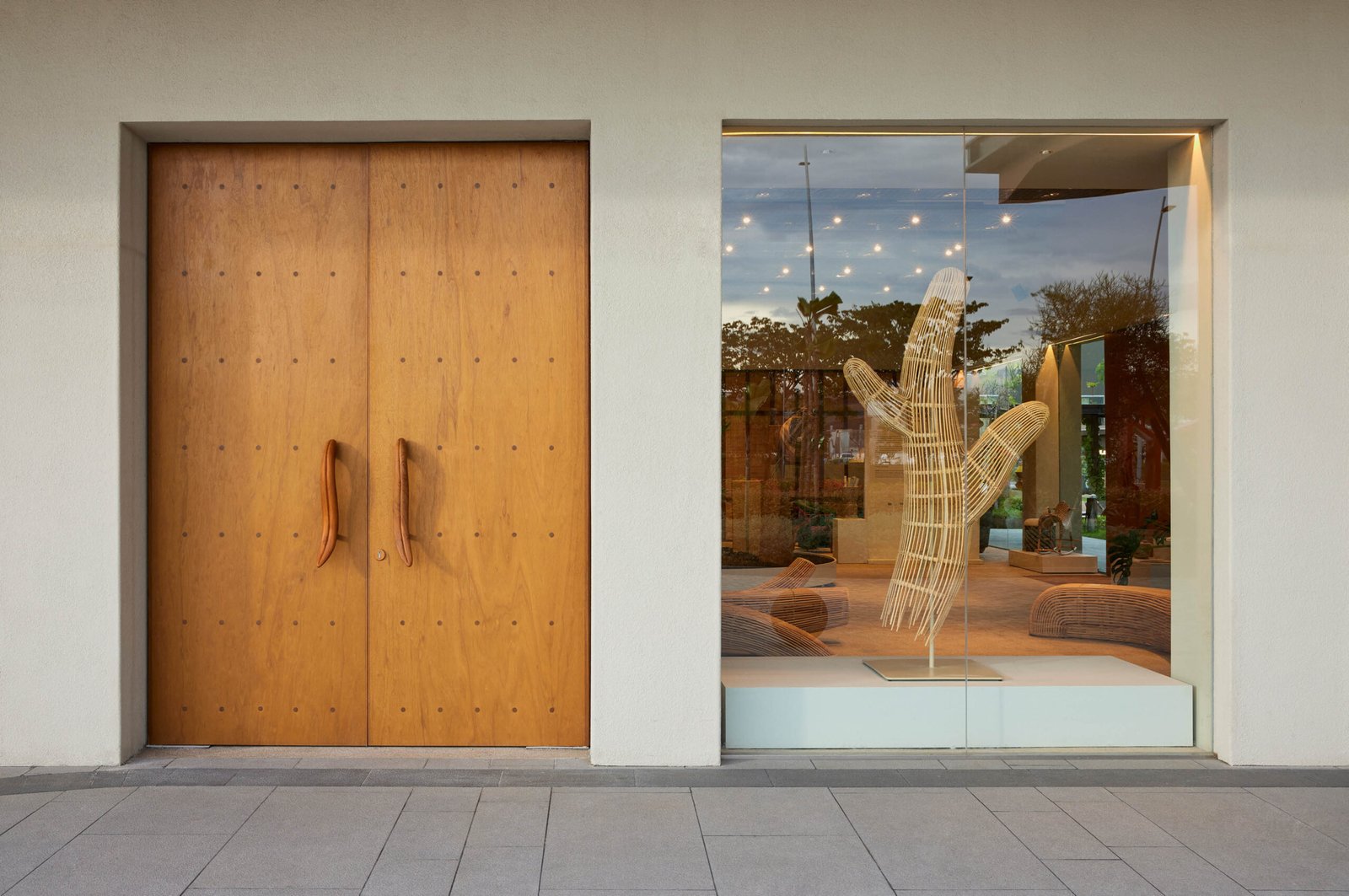



Beautiful. Let’s now talk beginnings, Alvin. Did you know early on that you wanted to be a designer? What about the field excited you? What pushed you to pursue the industrial design track specifically?
Alvin Tjitrowirjo: As a child, I loved drawing cars—so much so that I nearly failed a grade because of it. My fascination began when my dad worked at BMW in Indonesia. I also had a close group of friends who shared my passion for cars, and we spent our school years immersed in discussions about engineering, design, aesthetics, and technology, down to the smallest detail. A university representative later told me that pursuing car design required a foundation in industrial design. This was when I realized that design is much more than just drawing.
Initially, I struggled to grasp the new knowledge and skills I needed to learn. The shift from Indonesia’s education system in the late ’90s, which emphasized rote memorization and discouraged questioning or critique, made it a steep learning curve. But this new way of thinking excited me. Looking back, it feels like I was learning to liberate myself—maturing in my thoughts and beliefs and beginning to develop my own creative process.
What was the pivotal moment that led to the birth of AlvinT? What non-negotiables did you give yourself in terms of design ethos?
Alvin Tjitrowirjo: After college, I returned to Indonesia and briefly worked as a product developer for a furniture manufacturer outside Jakarta. My role was to bridge the gap between designers—both local and international—and the factory, translating designs into something feasible for production. Despite Indonesia being one of the world’s largest furniture manufacturing centers, the industry here has stagnated. Most factories still produce outdated pieces or copy Western designs for the local market, lacking a design language relevant to Indonesian customers. At the factory where I worked, they were still developing designs from the 1920s-1960s.
With access to various tools and resources, I was eager to innovate and often proposed new designs to the manager and owner. Their response was always the same: “Can you guarantee this will sell? Why change what already sells?” As a designer trained to find solutions, I found this mindset frustrating. After a few months, a friend, an interior designer, encouraged me to forge my own path to expand my creativity. So, I quit and decided to start something on my own.
On my last day, I showed some of my designs and asked my boss to support me by creating samples. A few months later, I organized an exhibition in a car showroom. Thanks to a senior interior designer I knew, who pulled some strings and invited the media, his clients, and business owners, the exhibition was a success. Many visitors became my first clients, launching my career as a furniture designer.
I always tell people and my team that I never intended to start my own brand or business. AlvinT was born out of frustration—there was no platform in Indonesia where I could explore my creativity and contribute to the local design industry.
Jakarta is a highly commercial market, with most customers still conservative, trend-driven, and hesitant to develop their unique style. This mentality hinders the growth of the design industry as people chase trends—whether it was Classic American in the 2000s, modern industrial in the 2010s, or Japandi in the 2020s. For me, it’s crucial to stay true to yourself, to look inward rather than outward, and to develop your personality without following trends.
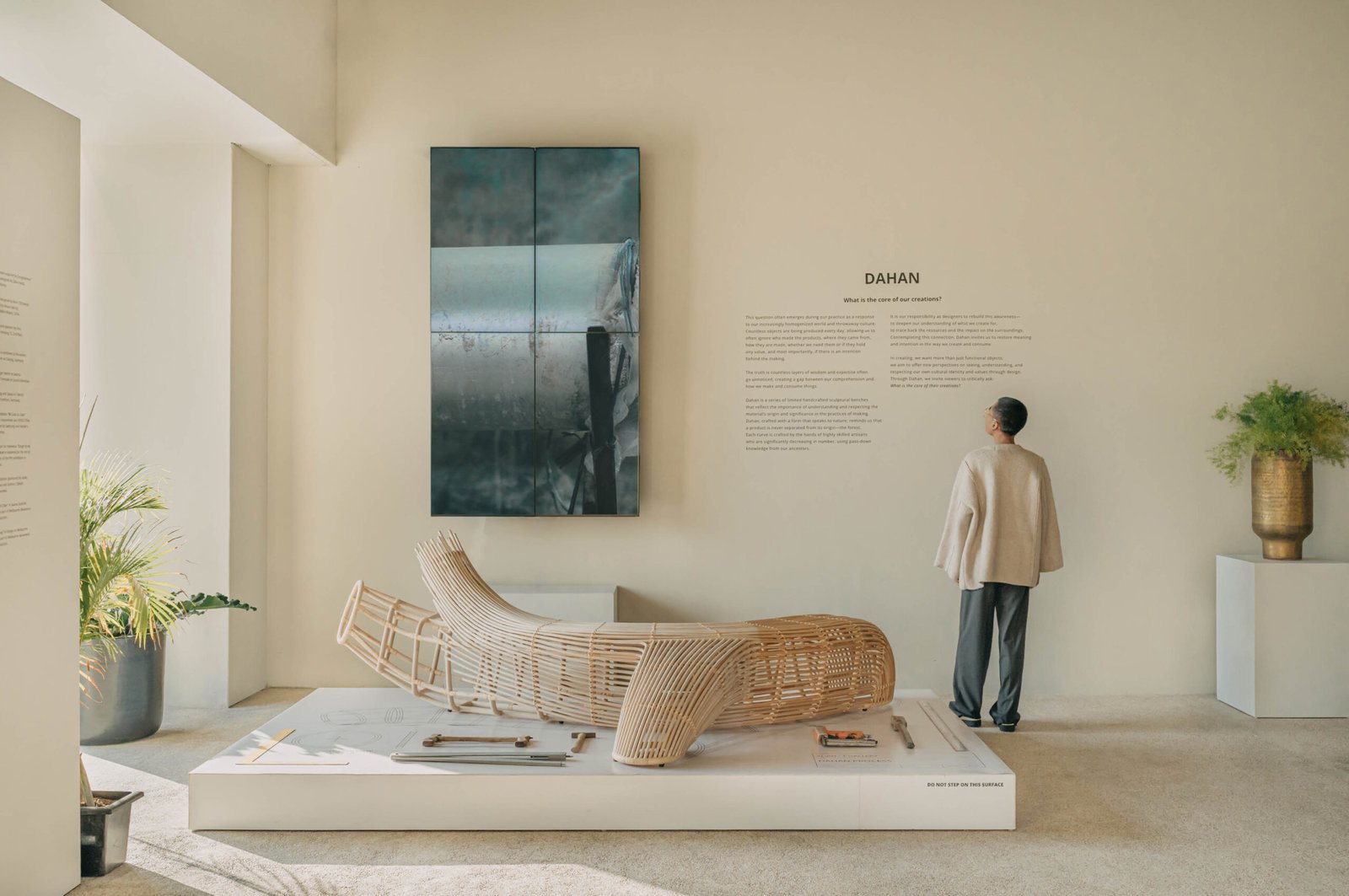



A question for you both now. Did your education abroad (RMIT and IED for Tjitrowirjo, Pratt and Harvard for Mayrina) prove pivotal in broadening your mindset and shaping your current approach? What would you say are essential learnings you derived from these formative years abroad? What, then, are the things that you needed to unlearn to prepare for the mission you have now set up for yourselves at AlvinT?
Alvin Tjitrowirjo: Yes, my undergraduate experience in Australia gave me a solid foundation in understanding the tools and skills designers need, helping systematize my creative process. In my postgraduate studies at the Instituto Europeo di Design (Madrid), I was exposed to various disciplines. The program was fascinating: the first six months were filled with workshops from experts across different creative fields, and the final six months allowed us to develop our own projects with any outcome we desired. This broadened my understanding of design’s role in crossing disciplines and emphasized how unbounded we are as designers. Product design shouldn’t be limited to just designing products.
At that time, I already had my own brand and was interested in repositioning the idea of “designed by an Indonesian.” This experience helped me see through different lenses and grasp the deeper complexities and multilayered challenges involved. Before designing a product, I needed to explore what it means to be Indonesian and what constitutes a nation’s identity in design, especially in the context of globalism.
At the university, I learned that product design is often seen as part of the industrial process of turning resources into commercial value, which can overlook the social and cultural connections between the people who create the product, the source of materials, and the richness of cultural and traditional wisdom. Applying this knowledge in Indonesia—a country not historically set up for industrialization—requires different approaches to problem-solving, considering social challenges, cultural interests, micro identities, and more. These aren’t “simple factors” that can be systematized to generate economic potential. Often, values beyond money are more important when creating things, and new products can sometimes create more problems than they solve.
Angela Mayrina: Yes, of course! My education abroad expanded my understanding of design’s possibilities and its role in society. But one of the most valuable lessons was learning to be critical and, as your question suggests, to “unlearn.” It sounds simple, but it’s not always easy when you come from a culture that values tradition, often to the point of “blind conformity,” where things remain unquestioned. Before returning to Indonesia, one of my professors advised, “When you go back, don’t adjust. Be a stranger to your own country.” This advice has stayed with me as a reminder to adopt a stranger’s perspective to create meaningful change, see things differently, and be ready to unlearn assumptions that cloud your sensibility.
At Harvard GSD, I was part of a misfit group in architecture school, pursuing a research-based degree in MDes (Master in Design Studies) with a focus on “Art, Design, and the Public Domain (ADPD).” The program aimed to teach an interdisciplinary approach to tackling today’s global issues, requiring us to view problems through multiple lenses before applying specific art or design expertise. Interestingly, most of my professors were trained as architects or product designers, but they now work as artists, curators, or activists addressing real and urgent socioeconomic, environmental, and political issues. Although the program’s focus has shifted and ADPD no longer exists, it had a significant impact on my thinking.
I also learned to unlearn the simplification process often taught in design. We’re trained to synthesize problems, stripping away unnecessary factors to arrive at a specific solution. But this process can eliminate the possibility of “accidents” or essential elements deemed unimportant by industrial or capitalistic standards—design itself being a product of industrialization. For example, when designing a rattan chair, a designer might focus on rattan sizes, techniques, or new forms, overlooking the complexities surrounding the craft: the dying art, the poor treatment of artisans, the lack of benefits for rattan farmers, and the diminishing rattan due to deforestation. All of these issues impact our practice in furniture making.
When I joined AlvinT, I wanted to bring this awareness and these complex questions to the forefront, recognizing the brand’s potential to pioneer and raise awareness about issues we can no longer afford to ignore.
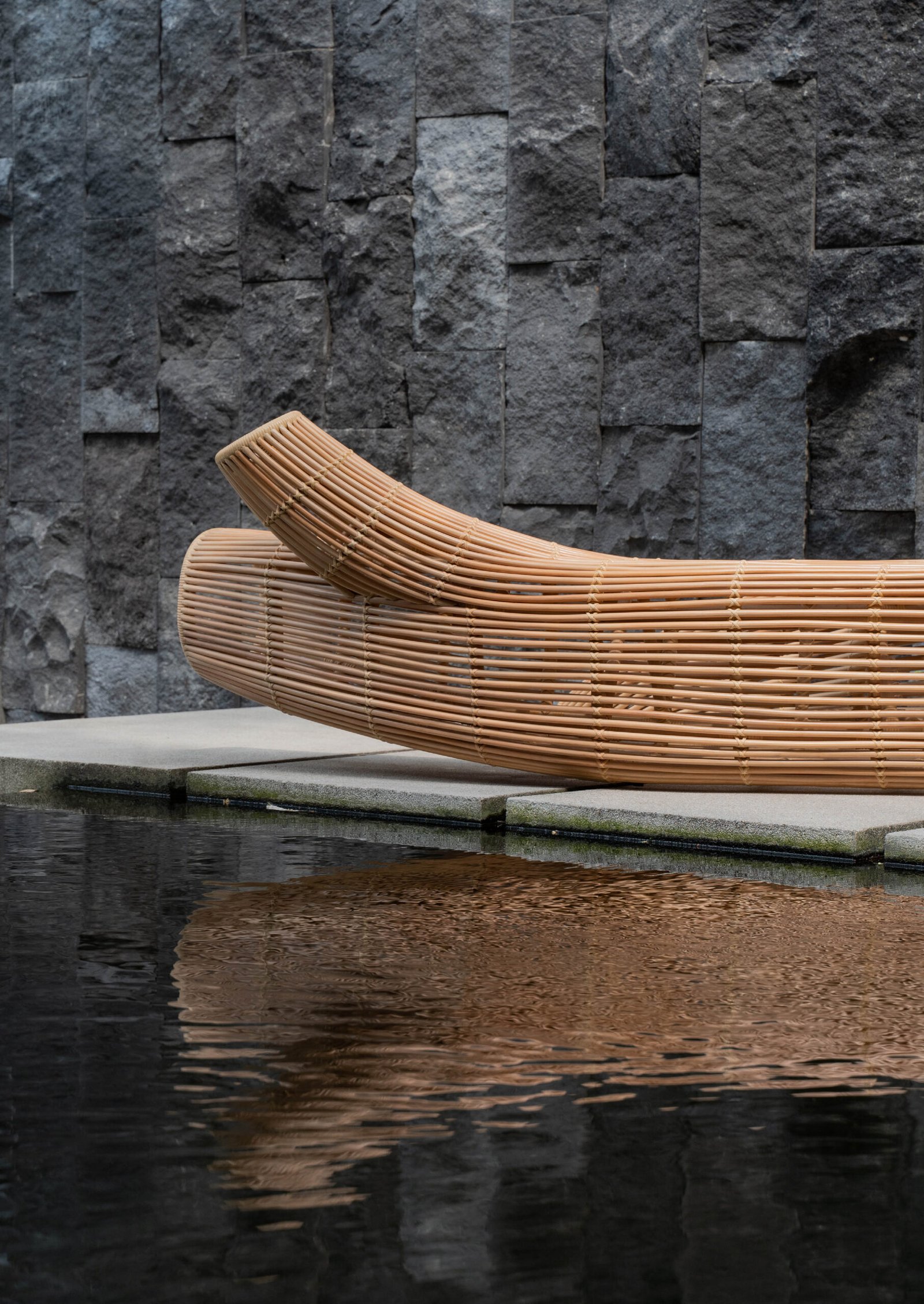

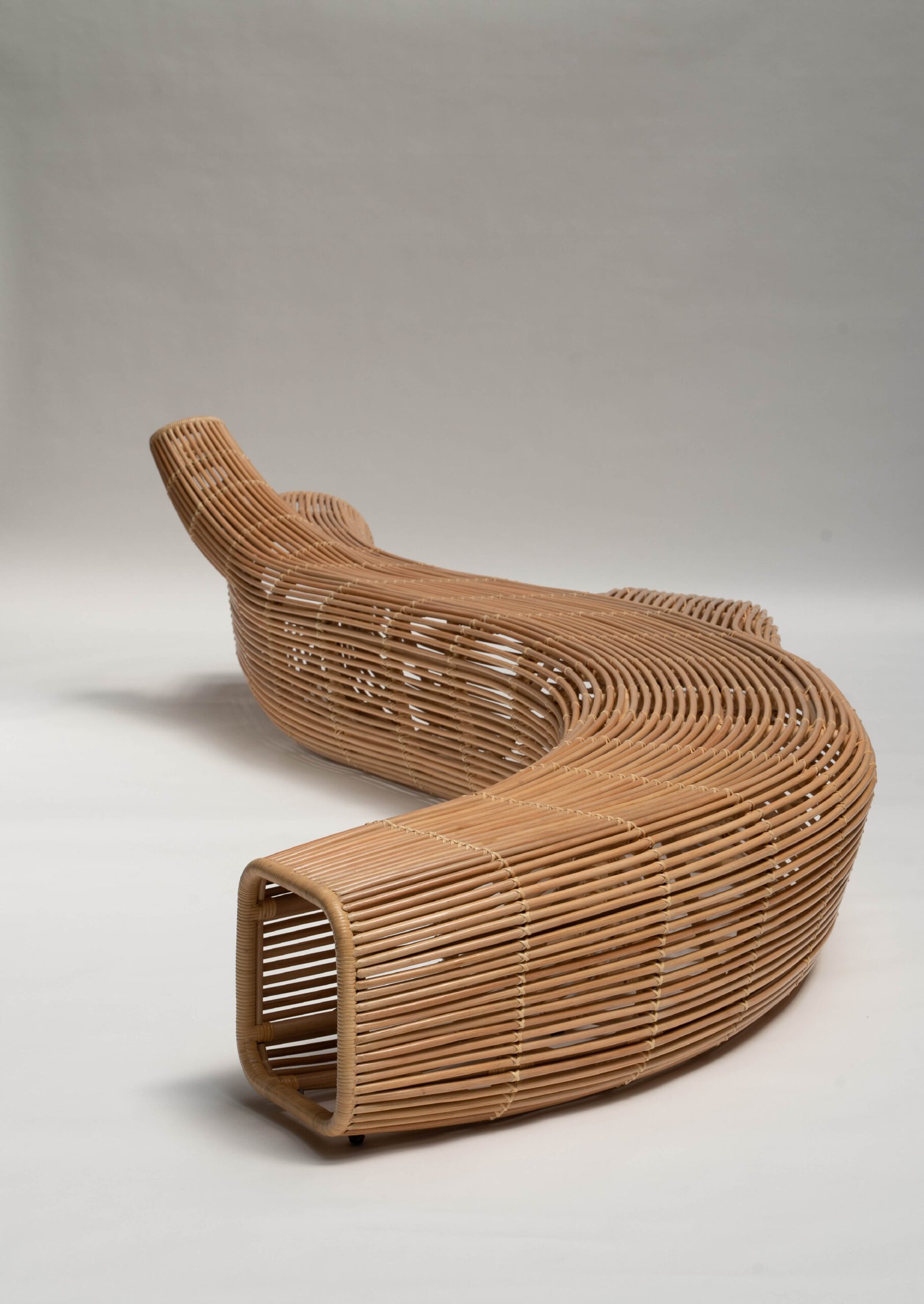
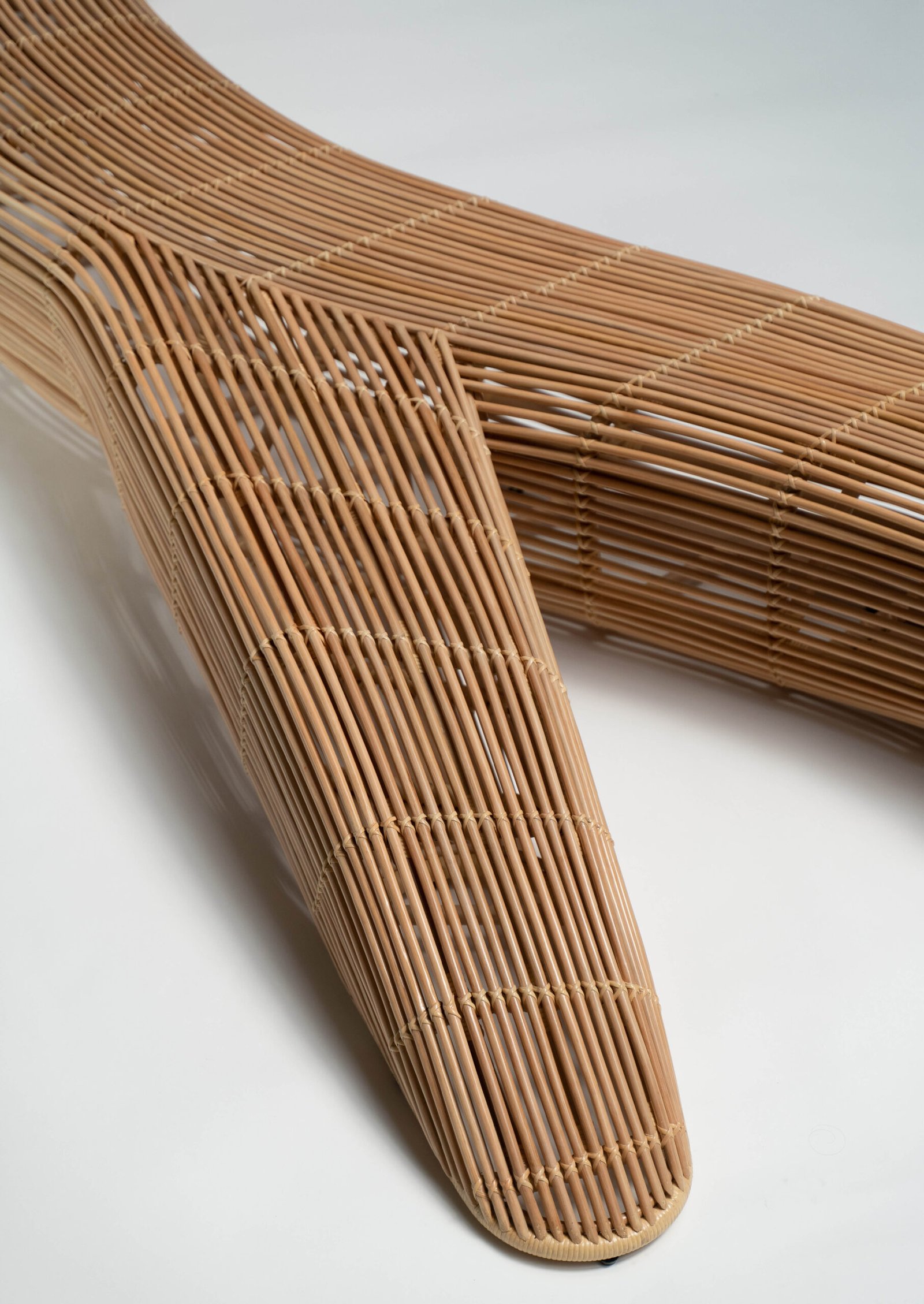

“Before designing a product, I needed to explore what it means to be Indonesian and what constitutes a nation’s identity in design, especially in the context of globalism.”


You both consider yourselves design activists. What ideals and vision of Indonesian design are you fighting for? What pressing issues specific to the Indonesian design industry do you feel require urgent attention and discourse?
Tjitrowirjo and Mayrina: We are fighting for the diversity of ideas and design in Indonesia. With 13,000 islands forming a country, there’s immense potential in our diverse cultures, knowledge, and perspectives. This should create a rich ecosystem where unique disciplines and forms can emerge, yet this hasn’t fully happened. Where design integrates culture, it often stops at adding traditional ornaments to modern pieces. And when it tries to avoid Indonesian cultural influence, it tends to look overly “Western.” Instead of simply adopting Western designs, we need to go deeper and explore how our local wisdom and knowledge can seamlessly integrate into contemporary life.
Design in Indonesia should address real, specific local problems, providing solutions rather than just focusing on “making.” We need to constantly ask what truly needs to be done, what the root causes of our issues are, and how design can intervene.
We also need more imagination—the ability to envision possible futures that are hopeful, ambitious, and optimistic. We’ve become too pessimistic about what Indonesia and Indonesians can achieve, often dismissing ourselves as neither winners nor dreamers—a mindset shaped by our education and government systems. This must change. The future of design in Indonesia and the role of our land, materials, culture, and creativity on the global stage should be shaped by optimism and a bold imagination.
Right, so let’s dig a little deeper. What would you say are little-known qualities, nuances, or sensibilities in furniture design or design in Indonesia that you feel should be celebrated more?
Angela Mayrina: Different cultures in Indonesia remain deeply connected to the land they inhabit. We hope this connection and generational expertise can also influence modern Indonesian design. These cultures carry unique knowledge, understanding, and perspectives that often contrast with what is currently taught in the modern design field, which has been largely developed and refined in the West. Integrating this traditional wisdom into design would not only create a richer and more unique approach but also help maintain our connection to the land.
Alvin Tjitrowirjo: What Angel has explained should be translated into practical design features. Indonesia’s tropical climate demands design solutions that work with, not against, the environment. Furniture and buildings should be breathable to beat the heat and allow airflow. This is exemplified by woven chairs or breezeblocks on walls rather than full glass skyscrapers or faux fur sofas made from acrylic. The intricate craftsmanship once common is now overshadowed by soulless minimalism. Intricacy and texture add charm and personality, offering tactile quality and meaning to materials. Changes in color or the development of patina over time should be celebrated, not avoided.




Your collaborations with Indigenous communities like the Dayaks and your contribution to the preservation of age-old craft and tradition are admirable. Drawing from these experiences, how does one toe the line between inspiration and cultural appropriation? How are your partner communities equal collaborators from the design stage to product promotion?
Tjitrowirjo and Mayrina: Cultural appropriation occurs when someone—especially from a majority group—adopts elements of another culture, often of a minority group, in a disrespectful or exploitative manner. This happens when the adopters fail to understand the deeper context or significance of the culture they are borrowing from. The problem arises when these cultural elements are taken out of context and reinterpreted according to the outsider’s perspective, usually for aesthetic purposes while ignoring their cultural importance. We’ve seen sacred patterns or cultural symbols inappropriately used as “costumes” or decorations in affluent homes.
Often, this can be avoided by involving the people in the design process. Through discussions with our partner communities, we learned that weaving is integral to the daily lives of the Dayak Tewoyan people—it’s used to create tools for farming, hunting, or foraging in the forests. Some ornaments are inspired by everyday observations like leaves or rain, while others carry sacred meanings reserved for important rituals. We also discovered that weaving is a form of storytelling for them; for example, they’ve woven tikar (mats) depicting their sacred tree, traditionally climbed to harvest honey.
With this understanding, we explored how the Dayak technique could be expanded to other products, especially furniture, in today’s urban life. The idea was to raise awareness and appreciation for this diminishing craft while bridging it to modern uses.
Collaboration was key in the entire process. On our first visit, we brought initial drawings, which we then refined with the weavers, understanding their methods. We worked together in a workshop model, spending days on trial and error, discussing and creating. This hands-on approach revealed more opportunities and limitations, shaping the final design. We proposed forms and shapes, while the weavers suggested patterns that suited the technique. Many patterns were carefully chosen by the women, depicting plants or scenes from nature, telling the stories of their land to those who would later adopt these pieces.
Along the way, we gained an appreciation for the effort and time invested in each product. By the end of the workshop, we asked the weavers about their desired compensation for these new items, agreeing on a fair price based on their commitment to quality—a mutual agreement.
Explorations like these are often undervalued and dismissed as “hidden costs” or a “waste of time.” Yet, they are essential. Many artisanal crafts have died out because they couldn’t stay relevant without such deep engagement.

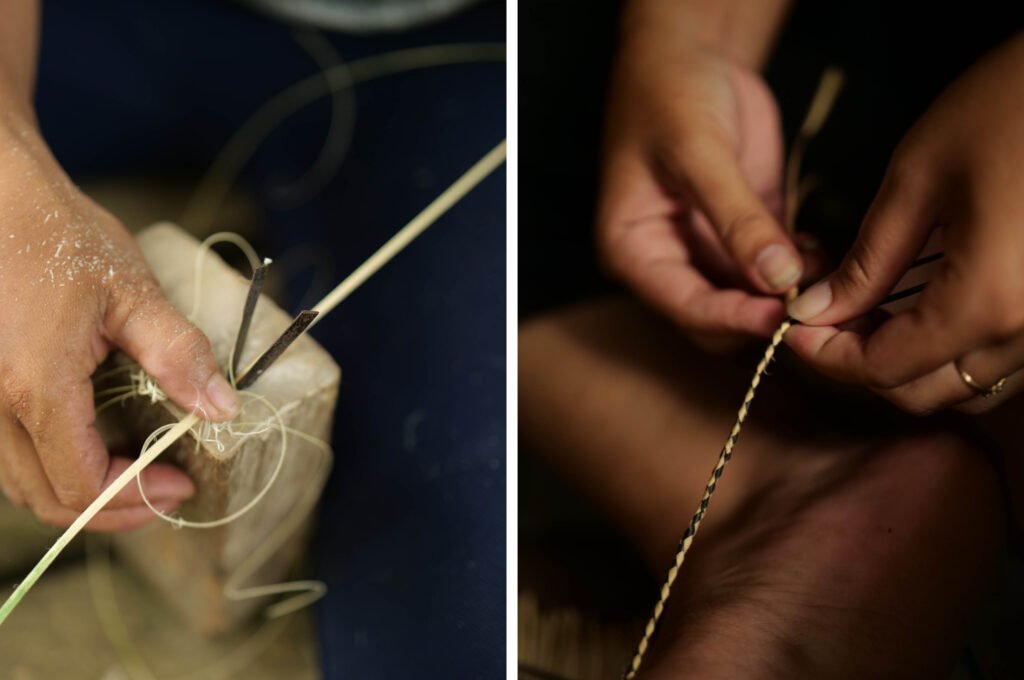

“We also need more imagination—the ability to envision possible futures that are hopeful, ambitious, and optimistic.”


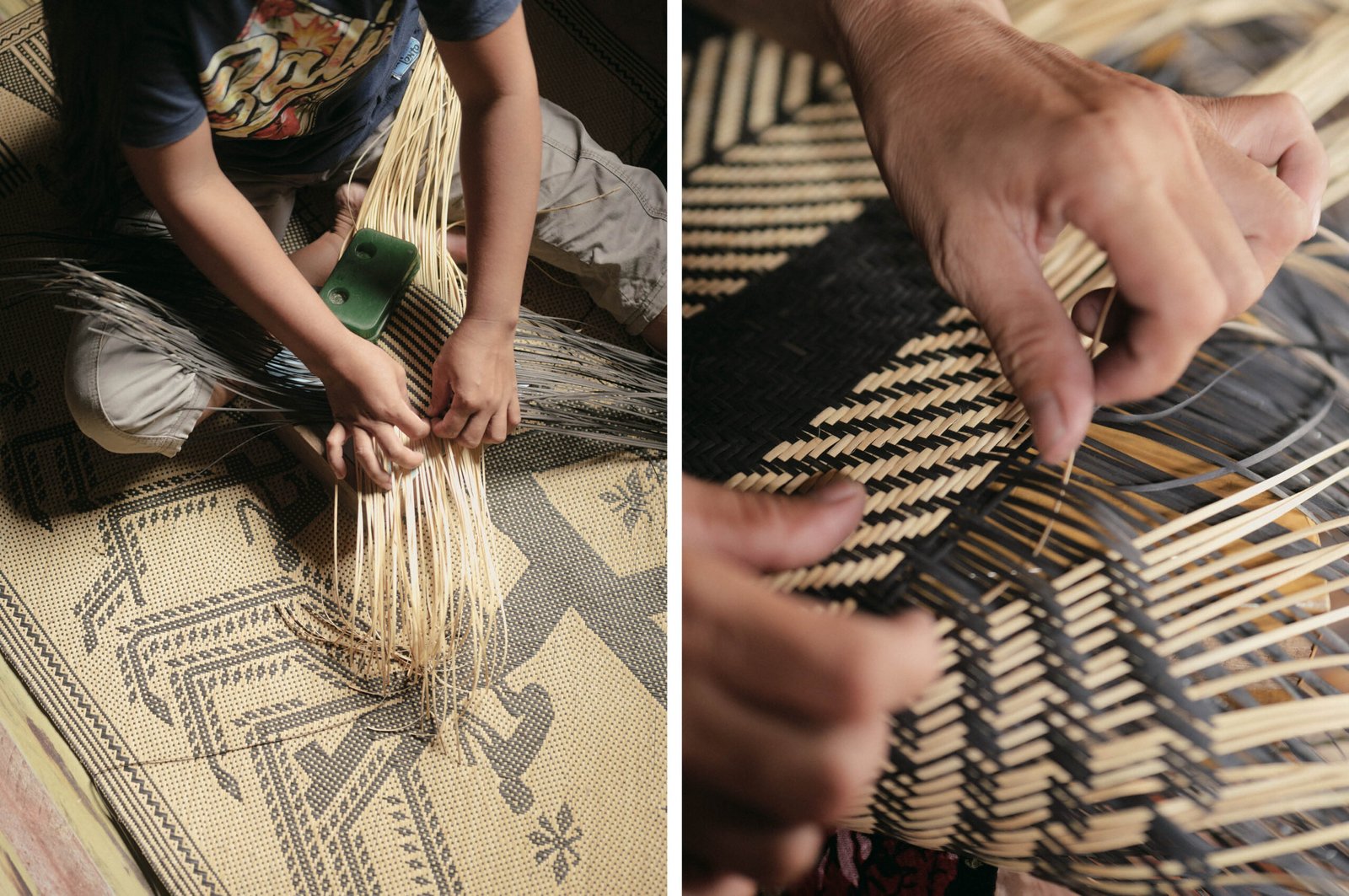

Can you tell us about the balancing act of learning and blending age-old techniques and motifs with modern innovations and tastes in the design process for your products?
Alvin Tjitrowirjo: It’s an ongoing cycle of learning, discovering, experimenting, then forming or manifesting new ideas. There’s a lot of experimentation in combining techniques and materials, and often, we need to set our own parameters to clarify the message we want to convey. It’s more about an internal dialogue—how to process these elements (techniques, tradition, material) and find the best composition in the form of a shape or object that suits the message—rather than focusing on what the market wants or needs.
Has there been a time when the partner community initiated or inspired a product idea? Have there been opportunities for AlvinT to empower the community to produce homebrewed products to keep income within the fold?
Alvin Tjitrowirjo: Unfortunately, not yet. In the past, we have worked with several non-profit institutions and government programs to teach local communities how to develop new ideas and products in several different places in Indonesia. However, these initiatives have not yet produced the expected results due to several factors.
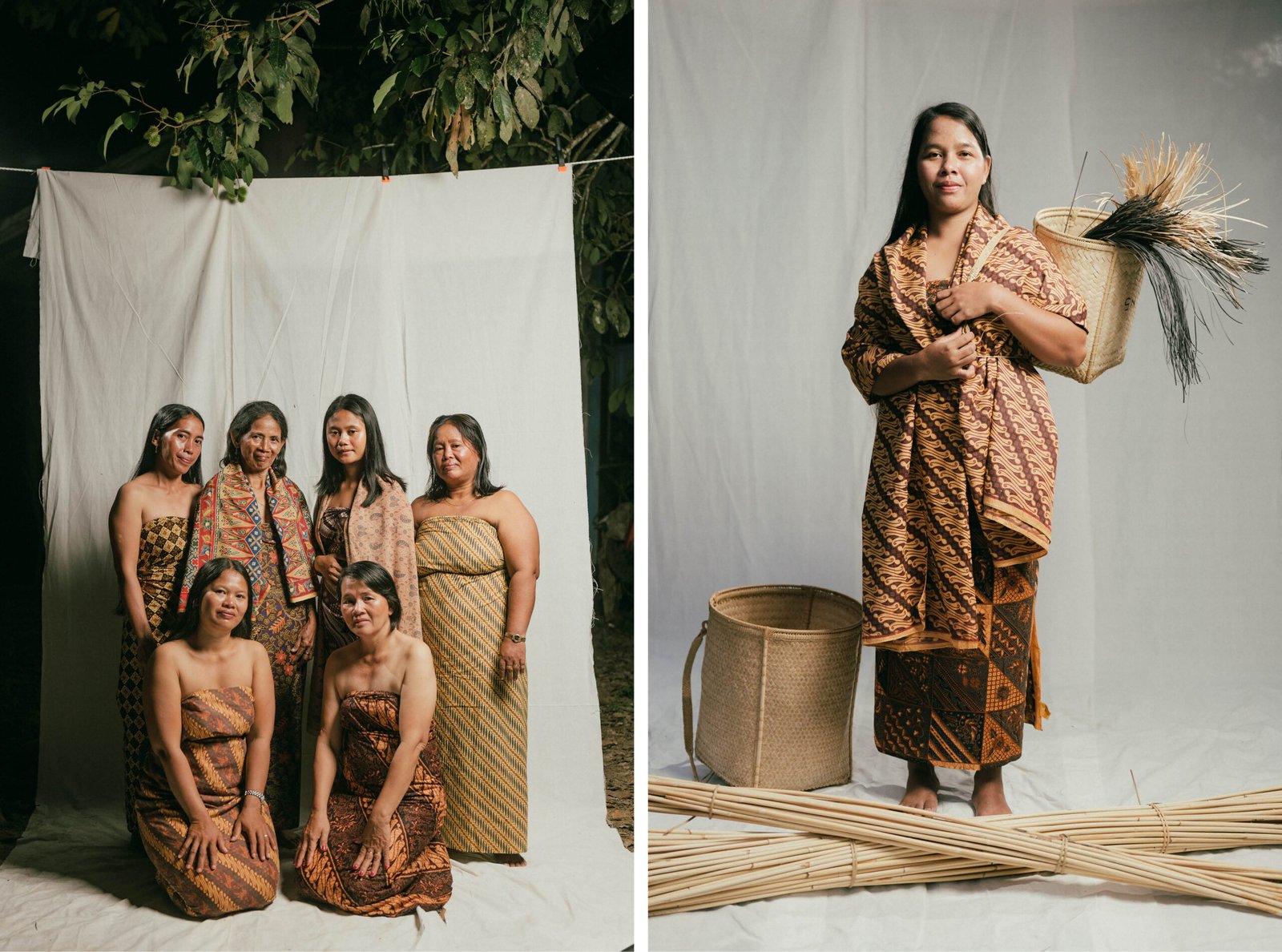


I’m sure your works have received their share of laudatory feedback, but what’s the most touching or memorable reaction you’ve received, whether it be from a collaborator or user, in relation to a product you’ve designed?
Tjitrowirjo and Mayrina: After we began collaborating with HANDEP for our Ndare collection, we became close friends with the Dayaks from Central Kalimantan who run it. When we opened our gallery earlier this year, we invited them to Jakarta for the event. One of them saw our works for the first time and began crying when she saw our Dahan piece, inspired by a tree branch. She said it reminded her of her childhood in Kalimantan, playing on fallen logs. The piece brought back an overwhelming sense of grief as she recalled witnessing the rapid disappearance of these trees from the forests since then.
We were humbled by that moment. The fact that design can spark such emotion is priceless. We would love to see more of it – people being moved by what we do and hopefully inspired to do something from their hearts.
Let’s now discuss sustainability. As much as product design addresses a need, it also drives consumption and demand. What steps does AlvinT take to embed sustainability and circularity in its operations?
Tjitrowirjo and Mayrina: We’ve been constantly asking ourselves this question. We do not want to consider ourselves “sustainable” because we are not yet. We started to address the issue of over-production by creating objects that are meant to last, are timeless, and can be repaired. What we want to encourage is for furniture to be considered as objects that can be forever with you as you age or can be inherited by the generations after. Quality becomes one of our priorities to ensure this. Our products are also not mass-produced and are still handmade because we believe in keeping the artisans and craftsmanship as a way to connect people with the products they own. For people to learn about this, it is essential to create objects that relate to our customers on a deeper level than just practical needs.
Many of our indoor products are also made from rattan, an underappreciated alternative sustainable material that is abundant locally. Generally, rattan production is still very hand-intensive with minimal machinery and energy. Everything made from rattan can also be repaired instead of replaced. We have integrated “repairment” as part of our services as well. Our customers come to us now and then to have their pieces from 5 to 10 years ago repaired.
Partnering with our friends who started HANDEP, we are also experimenting and continuously researching how to develop and implement a system for transparent rattan (raw material) sourcing from Central Kalimantan. We plan to develop this further to improve the sustainability and availability of rattan sourcing in the future and create a system where the local rattan farmers (harvesters) could have fair compensation as opposed to the current trade system mediated by many middlemen.


What do you think are qualities or aspects of industrial design of yore that have been lost to ‘advancements’ we have today in product design? And a related question; what advice would you leave budding creatives wishing to pursue the same path you did?
Alvin Tjitrowirjo: “Designed to be repaired” is one key feature that when products were more mechanical than digital made visible, this also comes with a higher level of quality in terms of material. Luxury is also in many times defined by durability, longevity of the materials, and mechanics of the products. Many things that were made in the 70s-90s are of better quality compared to today’s products. This is also driven by how companies are driven to seek more profit out of the usability of their products. Meanwhile, “planned obsolescence” is now the key driver to many products, from automotive to fashion, electronics, homeware, etc., and luxury is portrayed in gold finishing, printed marble texture, or celebrity branding. The way to make more profit is to make the product more “luxurious”; luxury no longer goes hand in hand with durability or longevity.
Designers should be aware of the moral and social responsibility that our work bears; design is a political act, and whatever we design promotes a certain ideology and will exclude others. Designers should take part in conversations about what design should be made and not. The narrative of society is controlled by one who has the most money and should always be challenged. Since money doesn’t always equal wisdom, we also need to challenge the idea that designers should always work “for money” or for the one who has more money. This can be reversed if we take part in larger conversations.
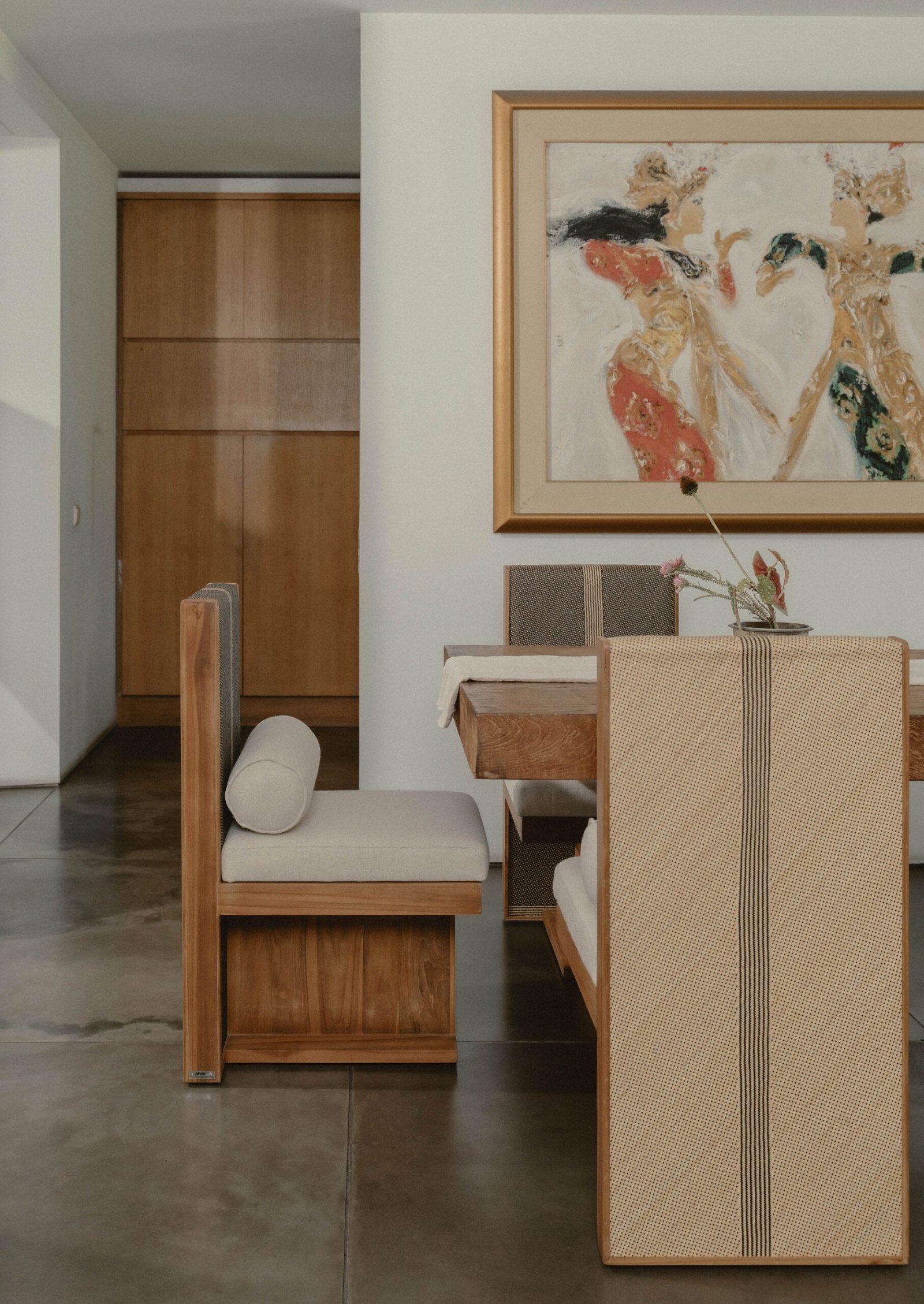


You’ve both preached the potential of rattan as an industrial material. Are there any other materials you wish to explore or are eager to uncover their potential in AlvinT?
Alvin Tjitrowirjo: We are currently just scratching the surface of rattan as a material. There is still a lot to learn, let alone develop and experiment with. We are interested in a variety of locally grown materials, but we feel that we need to focus on rattan for the time being before moving to other materials.
What’s a dream product you’ve always wanted to design? Not to brag, but we do have a good track record of Kanto interviewees manifesting their answers 😊. How about a dream design collaborator?
Tjitrowirjo and Mayrina: We’ve been dreaming about designing beyond products because we see design as a way of thinking—a lens to rethink the ordinary and envision a different future. In our practice, we’ve begun to design systems, strategies, and concepts beyond traditional products. Alvin’s dream project is to create a “Design Week,” an event crafted to foster conversations, exchange ideas, and generate solutions deeply rooted in local identities and challenges. Angel’s dream project is to curate a museum exhibition. Alvin has always aspired to design for international furniture companies that champion design and contemporary thought.
Before we close this conversation, let’s go macro again. What keeps you hopeful for the future of Indonesian design? Who are the designers that are solidifying your hopes for the field?
Tjitrowirjo and Mayrina: Architects Yori Antar, Andra Matin, and Jay Subjakto showcase a range of possible realities in their work. With a fearless drive to challenge norms, they’ve carved unique paths in Indonesia’s creative landscape. Many in the country’s creative fields continue to preserve a diversity of ideas and perspectives. Chitra Subyakto, through her fashion brand Sejauh Mata Memandang, reimagines the use of batik and kebaya in modern daily life. However, our rich design industry and culture face constant threats from unchecked globalism and capitalism. The tendency to value profit over process and the fear of standing out leads many to follow trends. But being among those who prioritize process over results keeps me optimistic, making the fight, though solitary, even more rewarding.




Time to drop the work talk. How do Alvin and Angela unwind after work? What hobbies or interests do you pursue outside design?
Alvin Tjitrowirjo: I enjoy a wide range of activities that provide both therapeutic value and creative stimulation, like film photography. The process of capturing images helps me align with my inner intention and clarify the image I want to create. Photography, especially with film, demands a conscientious approach, requiring empathy and creativity. The limitations of film and manual cameras push me to move, see from different angles, and stay inventive.
I’ve also been drawn to older films, not just for entertainment but as cultural exploration. Directors like Ingmar Bergman and Andrei Tarkovsky take sensitive psychological themes and transform them into powerful visual and auditory masterpieces that resonate deeply. The richness of these complex layers of humanity often contrasts with modern entertainment, which tends to oversimplify. These films evoke a range of emotions and provoke deeper existential questions. Bergman’s Persona and The Seventh Seal, and Tarkovsky’s The Sacrifice, are visually striking, offering depth and complexity in theme while remaining visually compelling.
It’s unfortunate that many contemporary films reduce conflicts to simplistic “good versus bad” narratives for mass appeal when morality itself is far more nuanced. We all bear psychological scars, and art or film should address these difficult themes to raise public awareness. There’s so much meaning in life to extract and savor in the process.
Angela Mayrina: I read a lot to unwind. Even when I pick up books unrelated to design, I find inspiration for our work. Books are crafts in themselves, offering different ways to communicate ideas. The process of making a book—requiring patience, commitment, and time—teaches valuable lessons. Unfortunately, good-quality books are hard to find in Indonesia. But during the pandemic, I discovered Instagram accounts of old book resellers offering curated, rare ex-library books on history, anthropology, philosophy, and even banned titles from Indonesia’s political past. Since then, I’ve been growing my collection, focusing on Indonesian history and Kalimantan (Borneo), with the hope of learning more about our past and eventually creating my own library. I also enjoy art books and have recently started collecting works by Singaporean visual artist Robert Renhui Zhao. •
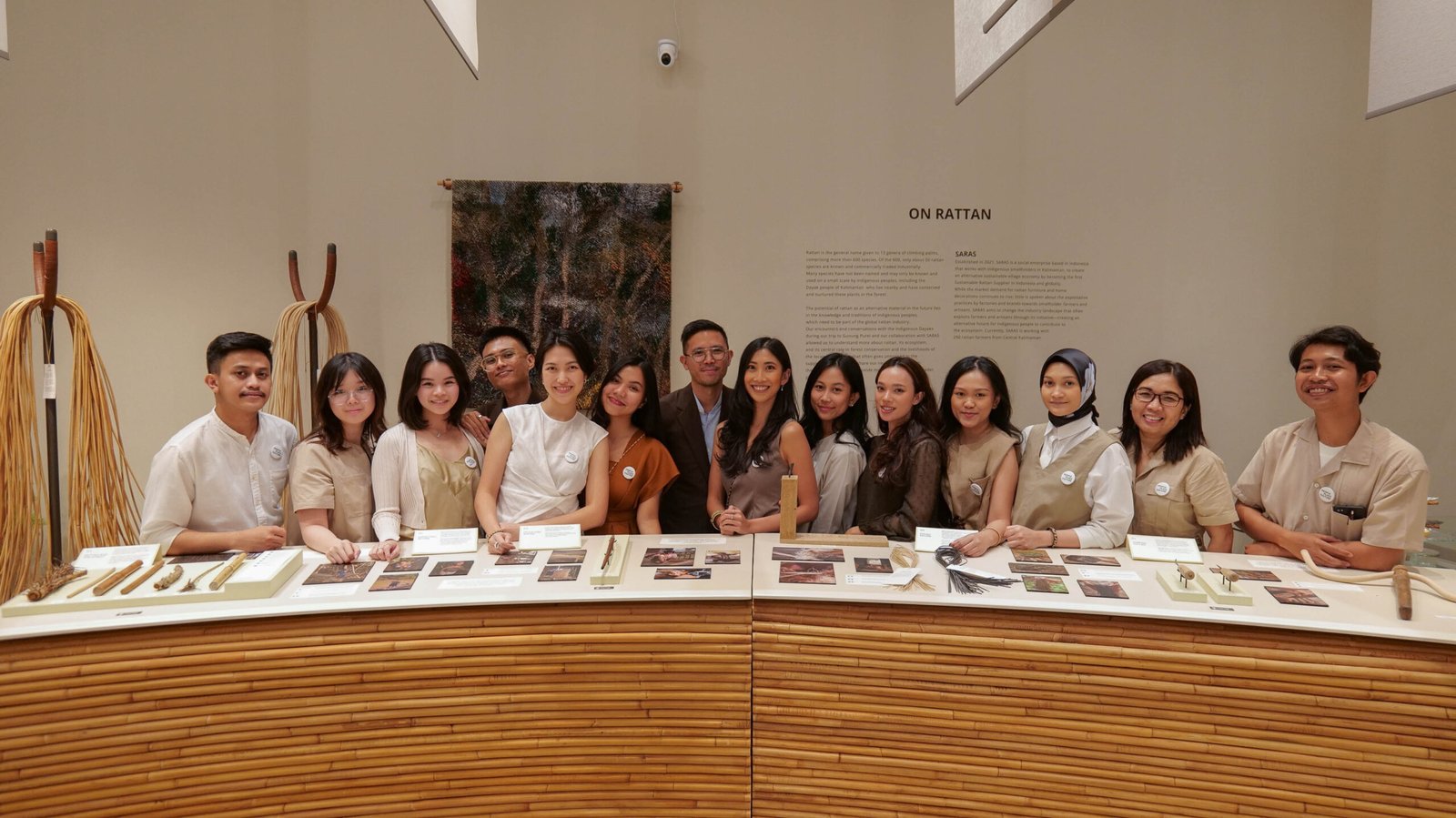



Kanto thanks the Philippine Institute of Interior Designers and Spruce Gallery for making this interview possible
